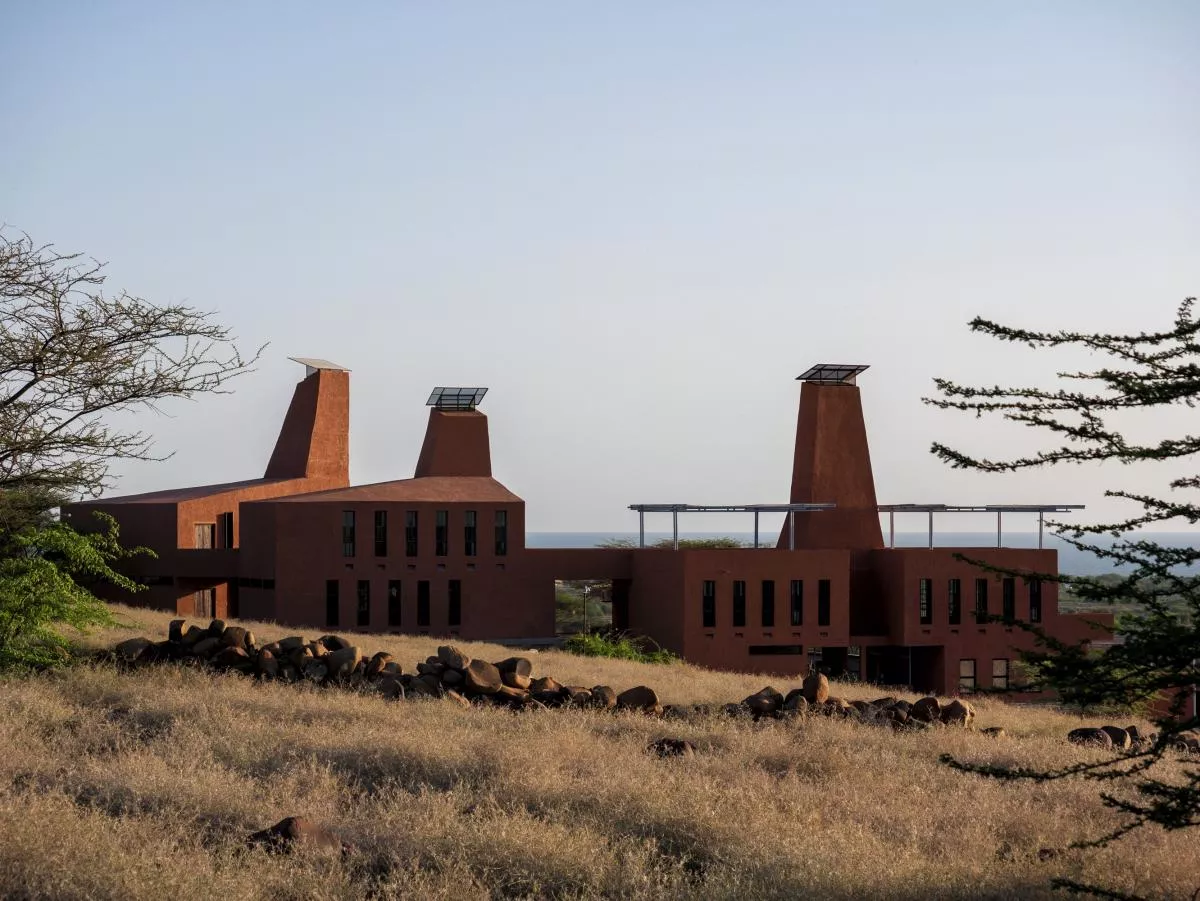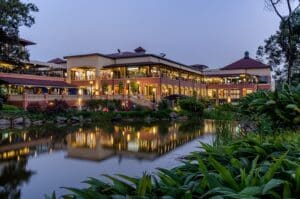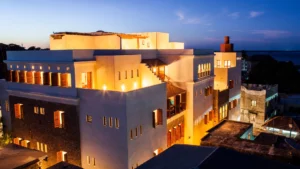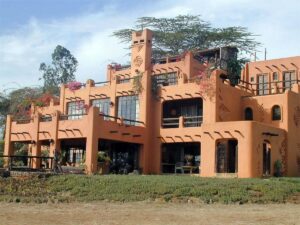Updated on 2024/03/22– Kenya, located on the East coast of Africa, has a rich cultural and historical heritage. Its architecture reflects the country’s diverse and vibrant past, as well as its modern aspirations. From ancient Swahili buildings to modern skyscrapers, Kenya’s architecture has evolved to reflect the changing times. In this article, we will explore the various styles of architecture in Kenya and how they reflect the country’s cultural heritage.
Introduction to Kenyan Architecture
Kenyan architecture is a mix of traditional and modern styles. Traditional architecture is mainly found in rural areas and is characterized by the use of local materials such as mud, thatch, and stone. Modern architecture, on the other hand, is found in urban areas and is characterized by the use of concrete, glass, and steel.
Traditional Kenyan Architecture
Traditional Kenyan architecture is mainly found in rural areas, where people still practice traditional ways of living. Traditional buildings in Kenya are characterized by the use of natural materials, such as mud, thatch, and stone. These materials are cheap and readily available, making them an ideal choice for rural communities.
Swahili Architecture
One of the most prominent examples of traditional architecture in Kenya is Swahili architecture. Swahili architecture is a blend of African, Arabic, and Indian styles. It is mainly found along the coast of Kenya and Tanzania, where it has been influenced by the Arab traders who came to the region in the 7th century.
Swahili architecture is characterized by the use of coral stone, lime plaster, and intricate wooden carvings. The buildings are designed to maximize ventilation and to provide shade from the sun. The most notable examples of Swahili architecture are the Fort Jesus in Mombasa and the Lamu Old Town, which is a UNESCO World Heritage Site.
Maasai Architecture
Maasai architecture is another example of traditional architecture in Kenya. The Maasai people are a semi-nomadic tribe who live in the Great Rift Valley of Kenya and Tanzania. Their traditional homes, known as bomas, are made of mud, sticks, and cow dung.
The Maasai bomas are circular in shape and are designed to provide shelter from the elements. They are also designed to be easily dismantled and reassembled, as the Maasai people are semi-nomadic and move from one place to another in search of grazing land for their livestock.
Modern Kenyan Architecture
Modern architecture in Kenya is mainly found in urban areas, where people have adopted a more modern way of living. Modern buildings in Kenya are characterized by the use of concrete, glass, and steel. They are designed to be functional and to provide a comfortable living environment for their occupants.
Nairobi’s Skyscrapers
Nairobi, the capital city of Kenya, is home to some of the most modern skyscrapers in Africa. The city’s skyline is dominated by tall glass and steel buildings, such as the Times Tower, the Kenyatta International Convention Center, and the UAP Old Mutual Tower.
These buildings are a symbol of Kenya’s economic progress and its aspirations to become a modern and developed nation. They are designed to be energy-efficient and to provide a comfortable working environment for their occupants.
Green Architecture
Green architecture is becoming increasingly popular in Kenya, as people become more conscious of the environment. Green buildings are designed to be energy-efficient and to have minimal impact on the environment.
One notable example of green architecture in Kenya is the new headquarters of the United Nations Environment Programme (UNEP) in Nairobi. The building is designed to be energy-efficient and to have a minimal impact on the environment. It is also designed to be a showcase for sustainable design and green building technologies in Africa.
Contemporary Kenyan Architecture
Contemporary Kenyan architecture is a blend of traditional and modern styles. Many architects in Kenya are now combining traditional building materials and techniques with modern design and construction technologies. This has resulted in a unique and innovative style of architecture that reflects Kenya’s cultural heritage and modern aspirations.
One notable example of contemporary Kenyan architecture is the African Heritage House in Nairobi. The building is a blend of traditional African and modern architectural styles. It is made of mud and thatch, but it also has modern amenities such as air conditioning and Wi-Fi.
Public Buildings
Kenya is home to many impressive public buildings, including government buildings, hospitals, and universities. These buildings are designed to be functional, energy-efficient, and to provide a comfortable environment for their occupants.
One notable example of a public building in Kenya is the Kenyatta International Convention Center in Nairobi. The building is a modern architectural masterpiece and is one of the most iconic buildings in Kenya. It is designed to be energy-efficient and to provide a comfortable environment for conference attendees.
Challenges In Kenyan Architecture
Despite the impressive progress made in Kenyan architecture, there are still significant challenges that need to be addressed. One of the biggest challenges is the lack of proper planning and zoning regulations. This has led to haphazard development, with buildings constructed without regard for safety, environmental impact, or aesthetic considerations.
Another challenge is the lack of access to modern building materials and technologies in rural areas. This has led to the continued use of traditional building materials, which are often not durable and require frequent maintenance.
Additionally, the high cost of building materials and construction services has made it difficult for many Kenyans to build modern and sustainable homes. This has led to the proliferation of informal settlements and slums in urban areas, which are often overcrowded and lack basic amenities.
Commercial Architecture Magazine is a leading source of information for architects, designers, and builders who specialize in commercial building design.For the latest news and trends in commercial architecture, check out their website.
Innovations In Kenyan Architecture
Despite these challenges, there have been notable innovations in Kenyan architecture in recent years. One of the most significant is the use of green building technologies and sustainable design practices. Many architects and designers are now incorporating passive cooling techniques, rainwater harvesting systems, and solar energy solutions into their designs, which not only reduces the environmental impact of buildings but also helps to lower energy costs for occupants.
Another notable innovation is the use of prefabricated building materials and construction techniques. This allows for faster and more efficient construction, reducing costs and increasing access to modern building technologies.
The Future Of Kenyan Architecture
The future of Kenyan architecture looks bright, with continued innovation and development in the industry. As the country continues to urbanize and modernize, there will be a growing need for sustainable and energy-efficient buildings that are both functional and aesthetically pleasing.
Architects and designers will need to continue to balance the need for modern infrastructure with the preservation of traditional building techniques and materials. This will require a deep understanding of local cultures, customs, and materials, as well as an awareness of global design trends and technologies.
In conclusion, Kenyan architecture is a unique and evolving blend of traditional and modern styles, reflecting the country’s cultural heritage, modern aspirations, and economic development. As the country continues to grow and develop, architecture will continue to play an essential role in shaping its future.
People Also Ask
Who Is The Best Architecture In Kenya?
It is difficult to single out one architect as the best in Kenya, as there are many talented and innovative architects working in the country. Some notable architects include David Mutiso, Kabage Karanja, and Francis Kere, among others.
Which Country Is Number 1 In Architecture?
It is subjective to say which country is number 1 in architecture, as architecture is a highly subjective field. However, countries such as Italy, Spain, and France are often considered to be among the top countries in terms of architectural history and design.
What Are The Traditional Architecture?
Traditional architecture refers to the architecture of indigenous or local communities, which is often influenced by local customs, materials, and building techniques. Examples of traditional architecture include adobe houses in the American Southwest, thatched roof homes in rural Africa, and wooden stilt houses in Southeast Asia, among others.
Conclusion
Kenyan architecture is a mix of traditional and modern styles. Traditional architecture is mainly found in rural areas and is characterized by the use of natural materials such as mud, thatch, and stone.
Modern architecture, on the other hand, is found in urban areas and is characterized by the use of concrete, glass, and steel. Kenyan architecture reflects the country’s diverse and vibrant cultural heritage, as well as its modern aspirations.
With the increasing popularity of green architecture and the blending of traditional and modern styles, Kenyan architecture is sure to continue to evolve and innovate in the years to come.







